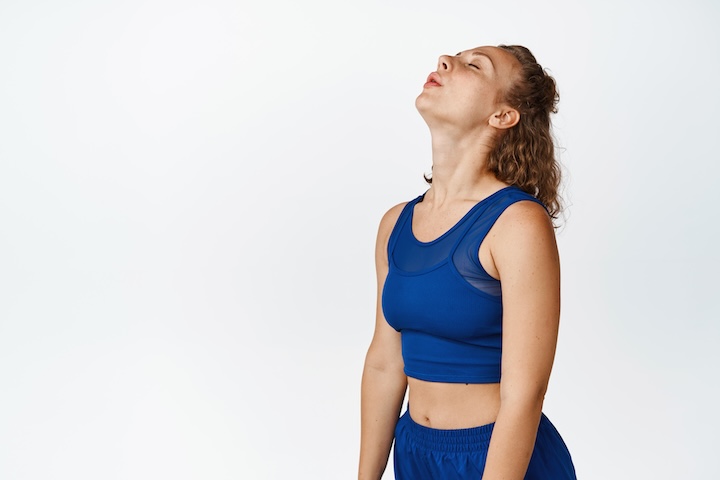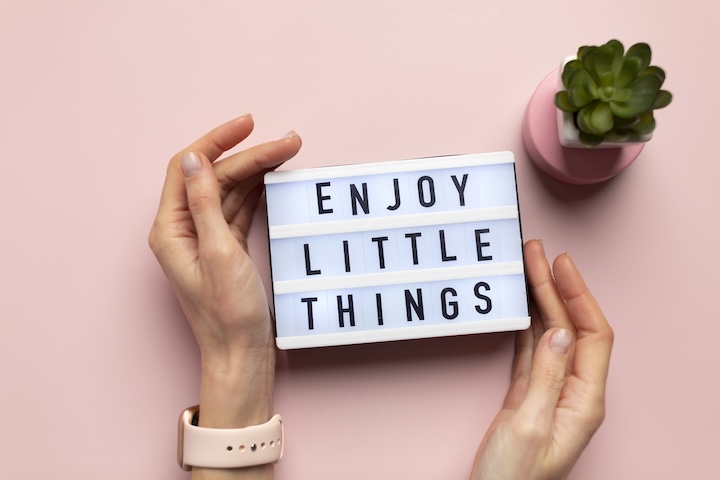Grounding Techniques for Panic Attacks: 8 Most Powerful Methods to Regain Control

Dealing with panic attacks can be overwhelming, but grounding techniques can help you manage them. Grounding techniques bring your focus back to the present moment, helping you feel more in control. These techniques can reduce the intensity of a panic attack and make you feel safer.
One effective method is the 5-4-3-2-1 technique. This involves identifying five things you can see, four things you can touch, three things you can hear, two things you can smell, and one thing you can taste. Concentrating on your senses shifts your mind away from anxiety.
Another helpful technique is deep breathing. Slowly inhale through your nose for a count of four, hold for four, and exhale through your mouth for four. This simple action can slow your heart rate and make breathing easier.

Understanding Panic Attacks
Panic attacks are sudden episodes of intense fear that trigger severe physical reactions when there’s no real danger or apparent cause. These attacks can impact your mental health and daily life.
Symptoms and Triggers
Panic attacks often start with a rapid heartbeat, sweating, and shaking. You might feel like you can’t breathe and experience chest pain. Some people feel dizzy, or like they’re losing control. The physical symptoms can feel like a heart attack, which can increase your fear.
Triggers for panic attacks can vary. Stress, anxiety, or a history of panic disorder might set off an attack. Situations that remind you of past trauma can also be triggers. Knowing what might set off a panic attack can help you manage and prevent it.
Effects on Mental Health
Panic attacks can significantly impact your mental health. Experiencing frequent panic attacks might lead to ongoing anxiety. You may start to avoid places or situations where attacks have happened before. This can lead to isolation and increased stress.
Consistent fear of having another panic attack can result in a cycle of anxiety. This fear can affect your daily life, making it hard to focus on work or school. Understanding how panic attacks affect mental health is important for managing and reducing their occurrence.
The Role of Grounding Techniques
Grounding techniques play a crucial role when you experience a panic attack or anxiety. These methods help you focus on the present moment and regain a sense of control.
When you use grounding techniques, you shift your attention away from distress and back to the here and now. This can lessen your anxiety and help you feel more relaxed.
One simple grounding technique is the 5-4-3-2-1 method. Look around and name:
- 5 things you can see
- 4 things you can touch
- 3 things you can hear
- 2 things you can smell
- 1 thing you can taste
This engages your senses and brings you back to the present.
Deep breathing is another helpful technique. Take a slow, deep breath through your nose, hold it for a few seconds, and exhale slowly. This can calm your mind and body.
You might also find physical grounding helpful. Carry a small object, like a smooth stone or a piece of fabric. When you feel anxious, hold and focus on this object. Notice its texture, weight, and details. This shifts your focus from panic to something tangible.
Positive affirmations can boost your confidence during a panic attack. Repeat calming phrases like “I am safe” or “This feeling will pass.” This can improve your sense of control.
Grounding techniques bring you back to reality when anxiety disrupts your peace. By focusing on the present and using these methods, you can manage panic attacks more effectively.
Breathing Exercises
Breathing exercises help calm your body and mind. They make you feel more in control during a panic attack by focusing on your breath.
Controlled Breathing
Controlled breathing is about taking slow, deep breaths. It can slow your heartbeat and help you feel calmer.
- Find a Quiet Place: Sit or lie down in a comfortable spot.
- Inhale Deeply: Breathe in slowly through your nose for four seconds.
- Hold Your Breath: Keep the air in your lungs for seven seconds.
- Exhale Slowly: Release the air gently through your mouth for eight seconds.
- Repeat: Do this cycle for about five minutes.
This exercise can reduce anxiety and bring a sense of relaxation.
Breath Focus Technique
The Breath Focus Technique combines deep breathing with thinking about calming images or words.
- Choose a Focus Word: Pick a word that makes you feel calm, like “peace” or “relax.”
- Get Comfortable: Sit or lie down in a relaxed position.
- Start Breathing: Inhale deeply through your nose.
- Say the Word: As you exhale through your mouth, silently say your chosen word.
- Stay Focused: Concentrate on your breath and words, blocking out other thoughts.
- Continue: Practice this for 10 minutes.
This technique shifts your focus away from panic and into a state of calm.
Sensory Awareness Strategies
Using sensory awareness strategies can help you manage panic attacks. Engaging your senses, such as touch, smell, and sight, can bring you back to the present and calm your mind.
5-4-3-2-1 Technique
The 5-4-3-2-1 Technique involves focusing on your surroundings to ground yourself.
- See: Look for 5 things you can see. Notice details, colors, and shapes.
- Touch: Find 4 things you can touch. Focus on textures and temperatures.
- Hear: Listen for 3 different sounds. Pay attention to volume and pitch.
- Smell: Identify 2 things you can smell. Scented candles or fresh air work well.
- Taste: Find 1 thing you can taste. A piece of gum or candy helps.
This method uses all your senses to bring awareness to the present moment.
Touch and Texture
Using touch and texture is another effective strategy.
Tactile objects: Keep a stress ball, smooth stone, or piece of fabric handy. Focus on the texture, temperature, and any changes as you handle them.
Cold or warm items: Hold an ice cube or a warm mug. Notice how the temperature feels and changes over time.
These exercises can help distract from anxiety and redirect your focus. Concentrating on touch or textures makes it easier to anchor your awareness in the present.
Cognitive Distraction Techniques
Cognitive distraction techniques can help redirect your thoughts and ease the overwhelming feelings during a panic attack. These methods often involve visualization practices and positive affirmations.
Visualization
Visualization is a useful mindfulness tool. It helps you focus your mind on a calming image or scenario, shifting attention away from panic.
Imagine yourself in a peaceful place like a beach or a quiet forest. Picture the scene in detail: the colors, sounds, and smells.
Focusing on these details can calm your thoughts and slow your breathing. This practice can create a mental escape from anxiety, making it easier to manage the symptoms of a panic attack.
Positive Affirmations
Positive affirmations are brief, encouraging statements. Repeating them can create a positive
Say these statements out loud or in your head during a panic attack. This will reinforce a positive mindset and reduce negative thoughts. It will ground you in the present moment and offer comfort, helping to ease the panic.
Physical Movement and Tactile Methods
Physical movement and tactile methods help ground by focusing on body sensations and muscle movements. These methods can also reduce panic attack symptoms by promoting relaxation and physical well-being.
Progressive Muscle Relaxation
Progressive Muscle Relaxation (PMR) involves tensing and then relaxing different muscle groups. By focusing on each muscle, you can shift your attention away from anxiety. Start at your feet and work your way up to your head.
This technique helps reduce muscle tension and promotes a sense of calm. It’s important to breathe deeply as you practice PMR. Deep breathing supports relaxation and enhances the benefits of this method.
PMR is simple to do any time you need grounding. Just find a quiet place, sit comfortably, and begin the exercise. This practice can improve your physical health by reducing the effects of chronic stress on your muscles.
Engaging in Physical Exercise
Physical exercise, such as walking or running, can be an effective grounding technique. Exercise encourages your body to release endorphins, which are natural mood lifters.
A brisk walk can help redirect your focus from anxiety to the physical act of moving. This shift in your mindset.
You might say things like:
- “I am safe.”
- “I can handle this.”
- “This feeling will pass.”
Movement helps regulate breathing and provides a break from stressful thoughts.
Incorporating exercise into your routine supports overall physical health. Regular movement can help keep your muscles strong and flexible. During a panic attack, exercise can serve as an immediate grounding tool to help reduce distress. Whether it’s a short walk or a full workout, physical movement aids in maintaining calm and control.
Creating a Grounding Routine
Creating a grounding routine helps manage panic attacks. Grounding techniques keep you in the present moment, reducing stress and anxiety. Here’s how to build an effective routine.
1. Identify Your Techniques: Choose techniques that work for you. Some common techniques include deep breathing, naming objects, and noticing physical sensations.
2. Practice Daily: Grounding should be a part of your daily life. Spend a few minutes each day practicing your chosen techniques.
3. Prepare for Emergencies: Have a plan for panic attacks. Keep a list of your grounding techniques handy. Use them when you feel anxious.
4. Get Support: Share your routine with someone you trust. Support from friends or family can be very helpful.
5. Be Consistent: Stick to your routine. Consistency makes grounding techniques more effective.
Sample Grounding Routine:
| Time of Day | Activity | Description |
| Morning | Deep breathing | 5 minutes of slow, deep breaths to start your day calm. |
| Afternoon | Object naming | Name five objects around you to stay present. |
| Evening | Physical sensations | Focus on how different parts of your body feel for 5 minutes. |
Tips:
- Use techniques that are easy to remember.
- Practice in different situations, not just when you’re anxious.
- Review your routine regularly to see if changes are needed.
- Set reasonable goals for your routine. It doesn’t have to be perfect, just helpful.
Seeking Professional Support

If you’re experiencing panic attacks, seeking help from a mental health professional can be very beneficial.
There are treatment options available. One common method is cognitive behavioral therapy (CBT). A therapist trained in CBT can help you identify and change negative thought patterns.
Another approach involves support groups. Talking with others who understand can provide comfort and insights.
A mental health professional can also suggest medication if needed. Therapy combined with medication can be effective.
Remember, professionals are trained to help you. Don’t hesitate to reach out.
Frequently Asked Questions
Grounding techniques help manage panic attacks, reduce anxiety, ease PTSD symptoms, and lessen depression effects by bringing focus to the present moment.
How do you use grounding techniques to manage panic attacks?
Grounding techniques help you focus on the present. You might notice physical sensations, like the feeling of your feet on the ground. This helps distract from overwhelming thoughts and reduces the intensity of the panic attack.
Can you describe the 5-4-3-2-1 coping technique for anxiety?
The 5-4-3-2-1 technique involves using your senses to bring awareness to the present. Identify 5 things you can see, 4 you can touch, 3 you can hear, 2 you can smell, and 1 you can taste. This method helps shift focus from anxiety to the world around you.
What are some effective grounding exercises for someone experiencing PTSD symptoms?
Simple grounding exercises can be effective for PTSD. These include deep breathing, focusing on a specific object, repeating a mantra, or holding an ice cube in your hand. These exercises help reduce flashbacks and intrusive thoughts by redirecting attention to the present moment.
In which ways can grounding methods assist in alleviating depression?
Grounding methods can lessen feelings of depression by promoting mindfulness and presence. Techniques like deep breathing, mindful walking, and body scans help shift focus from depressive thoughts to present experiences, improving mood and reducing feelings of sadness.
What is the 3-3-3 rule and how does it apply to calming anxiety?
The 3-3-3 rule involves naming 3 things you see, 3 sounds you hear, and moving 3 parts of your body. This exercise helps break the cycle of anxiety by redirecting your thoughts to specific, tangible elements in your environment.
Are there grounding techniques that therapists recommend for quick relief during a panic attack?
Therapists often recommend quick relief techniques such as breathing exercises, the 5-4-3-2-1 coping technique, or using a grounding object, like a textured item. These methods quickly bring your focus back to the present and can help manage the immediate symptoms of a panic attack.







